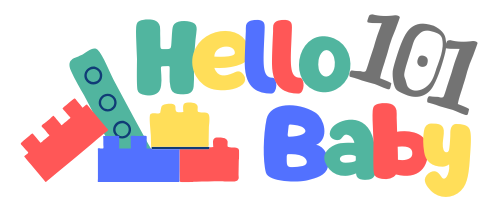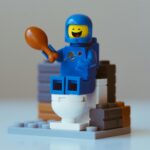Potty training is a major milestone in your toddler’s journey toward independence, but it can also feel overwhelming for parents. Knowing when to start, how to encourage your child, and which tools to use can make the process far smoother.
In this guide, we will walk through the signs of readiness, different training methods, step-by-step advice, common challenges, and even some myths and facts about potty training. You will also find placeholders for product recommendations so you can explore the best potties for your little one.
When Is the Right Time to Start Potty Training?
There is no universal age for potty training success. Most children in the UK start between 18 months and 3 years old, though every child develops at their own pace. According to the NHS potty training advice, signs of readiness are more important than age.
Signs Your Toddler Might Be Ready
-
Stays dry for at least two hours
-
Wakes up dry after a nap
-
Shows awareness by telling you when they need to wee or poo
-
Can follow simple instructions
-
Can pull pants up and down
-
Shows curiosity about using the toilet or watching siblings/parents
Parent Tip: “My daughter started showing an interest at 20 months. We waited until she could communicate when she needed to go, and that made all the difference,” shares Lucy, mum of two in London.
Potty Training Methods
Different families use different approaches. Here are three common methods:
1. Child-Led Potty Training
Also called the “wait until they’re ready” approach, this method follows the child’s cues. Parents introduce the potty casually and encourage use without pressure.
Pros: Lower stress, respects the child’s pace
Cons: May take longer to achieve full independence
2. Parent-Led Potty Training
In this approach, parents set a structured schedule. For example, sitting the child on the potty after meals and before bed.
Pros: Helps create routine, works well for structured households
Cons: Can cause resistance if the child is not developmentally ready
3. Three-Day Intensive Training
Popularised by parenting blogs and resources such as Made for Mums, this involves dedicating three days to full-time training with no nappies, lots of fluids, and constant trips to the potty.
Pros: Quick results for some children
Cons: Can be stressful, requires full parental availability
Step-by-Step Guide to Potty Training
-
Introduce the Potty
Keep the potty visible in the house so your toddler gets used to seeing it. -
Talk About It
Read books about potty training or watch short child-friendly videos. The ERIC charity (the UK’s bowel and bladder health organisation) has helpful resources for parents. -
Choose the Right Clothes
Loose trousers or leggings make it easier for your toddler to pull clothes up and down. -
Use Praise, Not Pressure
Celebrate small wins such as sitting on the potty, even if nothing happens. -
Encourage Routine
Place your toddler on the potty after meals, before naps, and before bedtime. -
Stay Calm with Accidents
Accidents are part of the process. A calm response reassures your child.
Pro Tip: Use a sticker chart or small rewards like extra storytime to encourage progress without adding pressure.
Tips for Stress-Free Potty Training
Expert Tip: Keep a travel potty or folding seat in the car or pram basket. It prevents stressful situations when your child needs to go while you are out.
Parent Tip: Model behaviour. Let your toddler watch you or an older sibling use the toilet to normalise the process.
Pro Tip: Night-time dryness usually takes longer than daytime dryness. Many children are not dry at night until age five, according to the NHS.
Expert Tip: Use neutral language. Instead of saying “You are naughty for having an accident,” try “Oops, the wee went on the floor. Next time we can try the potty.” This keeps the experience positive.
Common Challenges and How to Handle Them
Resistance to Using the Potty
Some children refuse to sit. Offer gentle encouragement and give them control, such as letting them choose a special potty or underwear with their favourite characters.
Withholding Poos
This is common and can lead to constipation. Offer reassurance, give your child privacy, and ensure they eat plenty of fibre and drink water. NHS constipation advice recommends fibre-rich foods and plenty of fluids.
Regression
Illness, travel, or big life changes can lead to setbacks. Stay calm, return to basics, and offer reassurance.
Fear of Toilets
The sound of flushing or the size of a big toilet can intimidate some toddlers. Using a potty chair at first or a toilet training seat can help ease the transition.
Myths vs Facts About Potty Training
| Myth | Fact |
|---|---|
| Children must be trained by age 2 | Readiness varies. Some are ready at 18 months, others closer to 3 or 4 |
| Punishment helps speed things up | Punishment can increase anxiety and slow progress. Positive reinforcement works better |
| Boys train later than girls | Differences exist but are not guaranteed. Readiness cues matter more |
| Night training comes quickly after day training | Many children need nappies at night until age 5, according to the NHS |
A Sample Daytime Potty Training Routine
| Time | Activity |
|---|---|
| Morning | Encourage potty use after waking up |
| After breakfast | Sit on potty for a few minutes |
| Mid-morning | Offer water and prompt potty visit |
| After lunch | Try potty before nap |
| Afternoon play | Gentle reminders every 1–2 hours |
| Dinner time | Encourage potty before meal |
| Bedtime | Final potty trip before storytime |
Final Thoughts
Potty training is a process, not a race. Recognising your toddler’s readiness, offering encouragement, and staying patient are the most important factors. Every child has their own timeline, and accidents are a normal part of learning.
With the right approach, a calm attitude, and tools like a comfortable potty, your child will eventually master this milestone. Remember that setbacks are temporary and progress will come with time.
For more guidance, see trusted resources like the NHS potty training advice, ERIC UK for bowel and bladder health support, and UNICEF Parenting tips for global guidance.
For even more guidance on this important milestone, explore our carefully selected picks for the best toddler potties. Each option is designed to support your child’s confidence and independence while making the potty training journey smoother, less stressful, and more enjoyable for parents and little ones alike.



